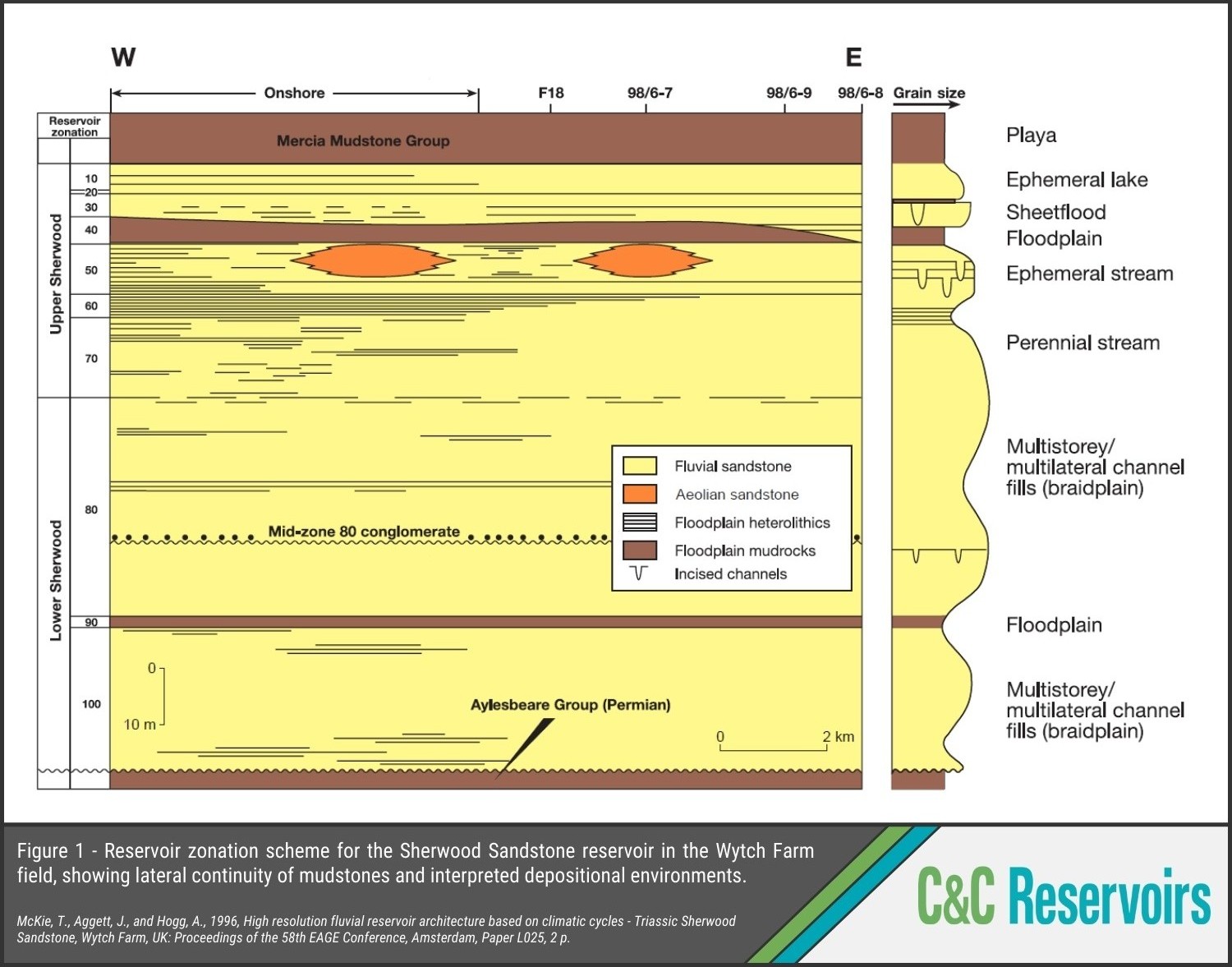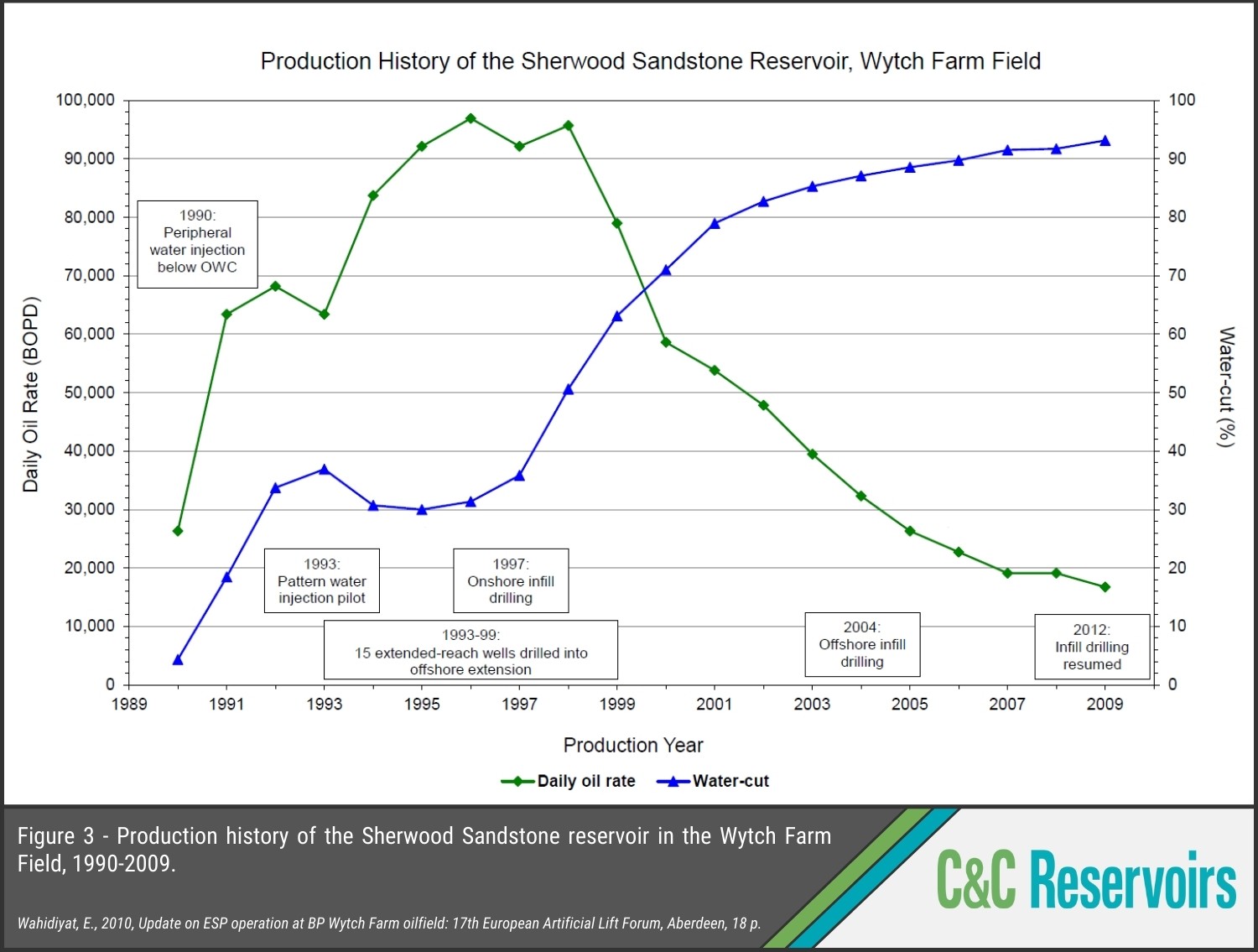The Wytch Farm Field
Analogue Spotlight
Straddling the south coast of England, the Wytch Farm oilfield has been producing from the heterogeneous Sherwood Sandstone reservoir since 1990. This complex reservoir features a mix of multistorey, multilaterally braided channel, sheetflood sandstones and widespread ephemeral lacustrine mudstones, resulting in a layered flow regime with poor vertical permeability (Fig. 1).
With 58% of reserves and the best channel sands located offshore, an artificial island was proposed in 1993 to access these lucrative reserves from 40 wells. However, advancements in technology led to a more economical solution: extended reach drilling (ERD).
These wells were drilled onshore to record breaking lengths, with the final well extending 10.7 km in length (11.3 km MD) at an 86° angle from vertical. For wells longer than 8 km, inverted tails were utilized to penetrate the less desirable upper layers (Fig. 2).
As a result of ERD, by 2003, 73 more wells had been drilled to target the offshore reserves, significantly increasing production from 67,336 BOPD to a plateau of 97,649 BOPD between 1995 and 1998 (Fig. 3).



